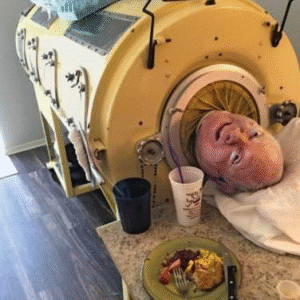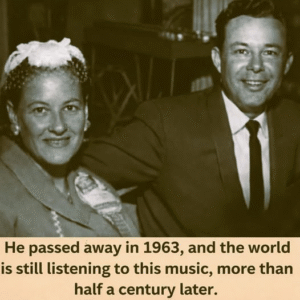In a decisive move against one of the nation’s most violent transnational criminal organizations, Attorney General Pamela Bondi today announced the arrest of three suspected MS-13 members in South Florida, while also revealing the indictment of a high-ranking MS-13 leader in New York. Standing alongside federal, state, and local law enforcement partners in Fort Lauderdale, AG Bondi underscored the Department of Justice’s unwavering commitment to dismantling the gang and bringing its members to justice—no matter how long it takes.
“More arrests are coming,” Bondi declared, addressing a growing tide of gang violence that has plagued communities across the United States and Central America for decades. “If you are a gang member living in this country, I’d self-deport right now, because we are coming after you.”
This announcement represents the culmination of painstaking investigations into cold-case murders dating back nearly a decade, spearheaded by the FBI’s Violent Crimes Task Forces and our dedicated law enforcement partners. It also signals a broader strategy under President Trump’s leadership to target MS-13 “shot callers” and dismantle the gang’s intricate network of “cliques” operating both domestically and abroad.
Understanding MS-13: Origins and Organizational Structure
La Mara Salvatrucha—better known by its shorthand, MS-13—originated in the 1980s within Salvadoran immigrant communities in Los Angeles. Founded by refugees fleeing civil war in El Salvador, the gang initially formed as a protective force against rival street gangs. Over time, however, its scope expanded far beyond mere self-defense, evolving into an international criminal enterprise characterized by extreme violence, intimidation, and ruthless enforcement of internal “codes.”
-
Cliques and Hierarchy. MS-13 is organized into semi-autonomous cells known as “cliques,” each with its own leadership structure. Local leaders—often called “shot callers”—direct day-to-day criminal activities, while central figures coordinate broader operations, including drug trafficking, human smuggling, extortion, and money laundering.
-
Membership and Recruitment. The gang recruits heavily among youth in marginalized communities, offering a sense of identity, protection, and belonging. Initiation rites often involve committing serious violent acts—including murder or attempted murder—to prove loyalty.
-
Transnational Reach. From its Los Angeles roots, MS-13 has spread throughout Central America and Mexico, establishing cliques in at least ten U.S. states and Washington, D.C. The gang’s transnational network facilitates smuggling of narcotics and undocumented migrants, as well as cross-border money transfers.
-
Tactics of Terror. MS-13’s notoriety stems from its brutal enforcement methods—stabbings, machete attacks, and public displays of violence designed to instill fear in rivals, law enforcement, and the communities in which it operates.
Reopening Cold Cases: The Florida Murders of 2015
Attorney General Bondi highlighted that the charges announced today stem from a series of violent homicides in South Florida dating back to 2015—cases that had gone cold until investigators reopened them in 2020. Through meticulous review of forensic evidence, witness testimony, and digital communications, FBI agents and state prosecutors were able to piece together the roles each defendant played in the murders.
Gerson Vilelio Vasquez-Portillo: A Rival’s Fate
In October 2015, 22-year-old Gerson Vilelio Vasquez-Portillo was brutally stabbed and shot near his home in Palm Beach County. Though initial leads yielded few suspects, renewed focus on MS-13 activity in the area prompted investigators to reanalyze ballistics and cell-phone records.
-
Defendants Charged. Jose “Chango” Ezequiel Gamez-Maravilla, Wilber “Blue” Rosendo Navarro-Escobar, and Hugo “Power” Adiel Bermudez-Martinez have now been indicted on charges including murder in furtherance of racketeering, conspiracy, and firearms offenses.
-
Modus Operandi. According to court filings, Vasquez-Portillo was lured to a secluded location by members of a rival clique. Once there, he was ambushed, stabbed multiple times, and shot execution-style.
-
Prosecution Strategy. By leveraging newly obtained digital forensics and the testimony of cooperating witnesses, prosecutors established that the attack was orchestrated by clique leaders fearing Vasquez-Portillo’s alleged affiliation with a competing gang.
Retribution for False Claims: The Canizales-Lara Killing
Investigators also charged three additional suspects—Wilson Tirado-Silva, Miguel Cabrera Granados, and Melvin David Cruz-Ortiz—in the November 2015 stabbing death of 18-year-old Joel Antonio Canizales-Lara. Court documents reveal:
-
Trigger for Violence. Canizales-Lara was killed after claiming MS-13 membership to enhance his street credibility—a claim quickly exposed by clique leadership.
-
Brutal Enforcement. The victim was cornered in a public park, stabbed repeatedly, and left for dead. His murder served as both punishment and deterrent for others contemplating false affiliation.
-
Legal Charges. The trio faces state charges of second-degree murder, aggravated battery, and gang conspiracy, with potential enhancements under Florida’s anti-gang statutes.
Flashing Rival Signs: The Gutierrez Shooting
Omar DeJesus Gutierrez, an 18-year-old with no known gang ties, was fatally shot in December 2015 after flashing what he believed to be a friendly hand gesture—which turned out to resemble a rival gang sign. According to the indictment:
-
Mistaken Identity. Gutierrez approached members of the clique for directions, unwittingly signaling a symbol interpreted as a challenge.
-
Ordered Murder. Wilson Tirado-Silva allegedly ordered the shooting as a demonstration of the clique’s dominance. Gutierrez was shot multiple times, including a fatal shot to the torso.
-
Ongoing Charges. Both Tirado-Silva and Cruz-Ortiz are charged with first-degree murder and conspiracy to commit murder, with prosecutors citing eyewitness accounts and ballistics reports tying them to the crime.
Solving the Ondina Murder: Initiation Rite Turned Tragic
The April 2015 killing of 25-year-old Chrislet Ondina also resurfaced as part of this broader investigation. The victim was lured under false pretenses and killed to complete his initiation into the gang:
-
Initiation Ritual. Court records depict a chilling rite: new recruits were required to demonstrate their loyalty by taking a life. Ondina—trusting his assailants—accompanied them to a secluded field, where he was stabbed and shot.
-
Defendants Involved. Both Tirado-Silva and Cruz-Ortiz have been charged in Ondina’s murder, with the prosecution arguing that the act was premeditated and integral to clique operations.
-
Evidence. Investigators utilized tire-track analysis, recovered shell casings, and intercepted communications showing bragging about the killing on encrypted messaging apps.
A “High-Ranking Leader” Brought to Justice in New York
Simultaneous with the Florida arrests, the Department of Justice announced the arrest of Joel Vargas-Escobar—known within the organization as “Momia”—a fugitive accused of orchestrating at least 11 killings across multiple states. Key points from the federal indictment include:
-
Racketeering Conspiracy. Vargas-Escobar is charged in the U.S. District Court for the District of Nevada with racketeering conspiracy, alleging his leadership role in ordering murders and directing firearms trafficking.
-
Murder in Aid of Racketeering. Two counts specifically charge him with murder in aid of racketeering, reflecting his alleged responsibility for the deaths of at least two confirmed victims.
-
Firearms Offenses. Associated charges include possession of firearms in furtherance of violent crime, carrying a maximum penalty of life imprisonment.
-
Fugitive Status. Vargas-Escobar had previously been deported to El Salvador in 2018 but is accused of re-entering the United States illegally in late 2020. For nearly four years, he evaded capture—until today’s coordinated operation involving the FBI’s Joint Task Force Vulcan.
“Under President Trump’s leadership, we will not rest until this terrorist organization is completely dismantled and its members are behind bars,” Bondi emphasized, applauding the efforts of both the Criminal Division’s Organized Crime Section and JTF Vulcan.





